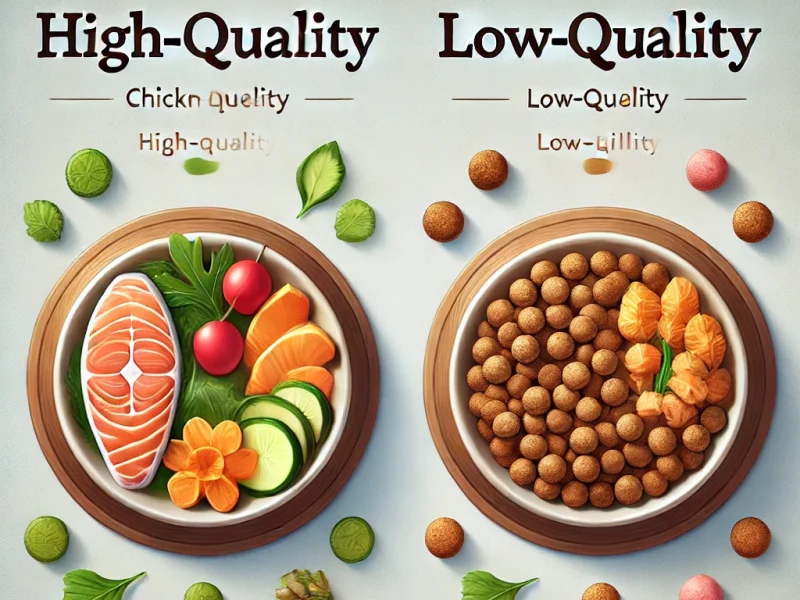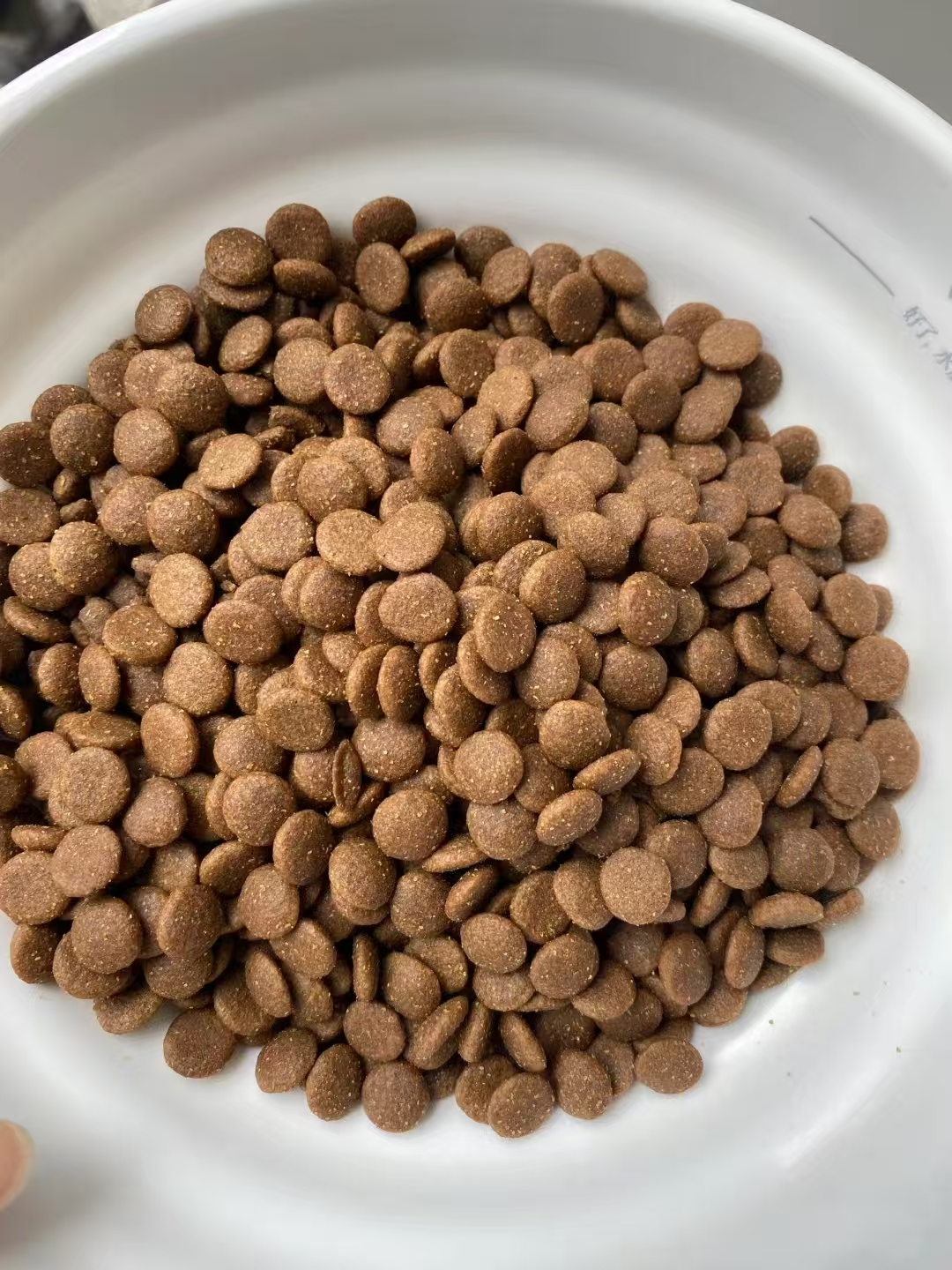
Choosing high-quality cat food is essential for your cat’s healthy growth and overall well-being. However, with so many options available on the market, it can be challenging to distinguish good cat food from bad. Here are the key factors and practical tips to help you identify premium cat food.
Check the Ingredient List
The ingredients directly determine the nutritional value of cat food. Here are some important criteria:
- Protein Source
- Characteristics of High-Quality Cat Food: Animal-based proteins (e.g., chicken, fish, duck) should be the primary ingredient, rather than plant-based proteins.
- What to Look For: The first item on the ingredient list should be a clearly defined meat source, such as “chicken” or “salmon,” rather than vague terms like “meat by-products” or “animal by-products.”
- Fat Content
- Characteristics of High-Quality Cat Food: Contains appropriate amounts of animal fats (e.g., chicken fat, fish oil) to support healthy skin and a shiny coat.
- What to Avoid: Excessive amounts of plant oils or unhealthy fats like palm oil.
- Carbohydrate Content
- Characteristics of High-Quality Cat Food: Low in carbohydrates, as cats are obligate carnivores and require minimal carbs. The carbohydrates should come from digestible, natural sources such as oats or sweet potatoes.
- What to Avoid: Large amounts of corn, wheat, or rice bran, which are often used as cheap fillers.
- Additives
- Characteristics of High-Quality Cat Food: Includes essential nutrients such as taurine (supports heart and vision health), probiotics (improve gut health), and vitamins and minerals, with clearly labeled sources.
- What to Avoid: Artificial colors, preservatives (e.g., BHA, BHT), and artificial sweeteners.
Analyze the Order of Ingredients
In the ingredient list, items are listed in descending order by weight. Here’s how to interpret it:
- Meat or Animal Protein Listed First: High-quality cat food usually lists meat or animal protein as the first ingredient, indicating that the primary protein source is animal-based.
- Minimal Fillers: Avoid foods where the first few ingredients are grains or starches like corn or wheat.
Review the Guaranteed Analysis
Premium cat food should have balanced nutrient ratios. Here are general benchmarks (specific needs may vary depending on your cat’s age, weight, etc.):
- Protein: 30%-40% (dry food)
- Fat: 15%-25% (dry food)
- Fiber: 1%-4%
- Moisture: 75%-85% (wet food)
Look for Certifications and Labels
- Quality Certifications: Check for labels like AAFCO (Association of American Feed Control Officials) or other international certifications. AAFCO approval means the cat food meets the daily nutritional requirements for cats.
- Detailed Labeling: High-quality cat food brands usually specify whether the food is suitable for all life stages or a particular stage (e.g., kitten, adult, senior).
- Transparent Formulas: Reputable brands clearly list all ingredient sources instead of using vague terms.
Research the Brand Reputation
- Characteristics of Reliable Brands: Reputable brands prioritize research, formula quality, and strict production standards.
- Check Reviews: Look for feedback from other pet owners on forums or communities to gauge the brand’s reputation.
Observe Your Cat’s Reaction
No matter how good the cat food appears on paper, your cat’s response is the ultimate test. Consider the following:
- Coat Condition: Is your cat’s fur shiny and soft?
- Stool Quality: Well-formed stools without an unpleasant odor indicate good digestion.
- Energy Levels: Is your cat active and maintaining a healthy weight?
- Appetite: Does your cat enjoy the food? Be cautious of food with excessive additives that may cause overeating.
Avoid Common Pitfalls in Low-Quality Cat Food
Here are common issues to watch out for in low-quality cat food:
- Excessive Grains: Cheap cat food often uses large amounts of grains as fillers, which do not align with a cat’s natural dietary needs.
- Artificial Additives: Ingredients like artificial colors, preservatives, and flavors can harm your cat’s health.
- Undefined Ingredients: Terms like “meat by-products” or “animal fat” indicate low-quality and unclear sources.
Conclusion
High-quality cat food should prioritize high-quality animal protein, have transparent ingredient lists, and provide balanced nutrition tailored to your cat’s specific needs. In addition to reviewing the food’s label and certifications, always pay attention to your cat’s health and behavior to ensure the chosen food is suitable. Providing your cat with the right food will contribute to a healthier, happier, and longer life together!







